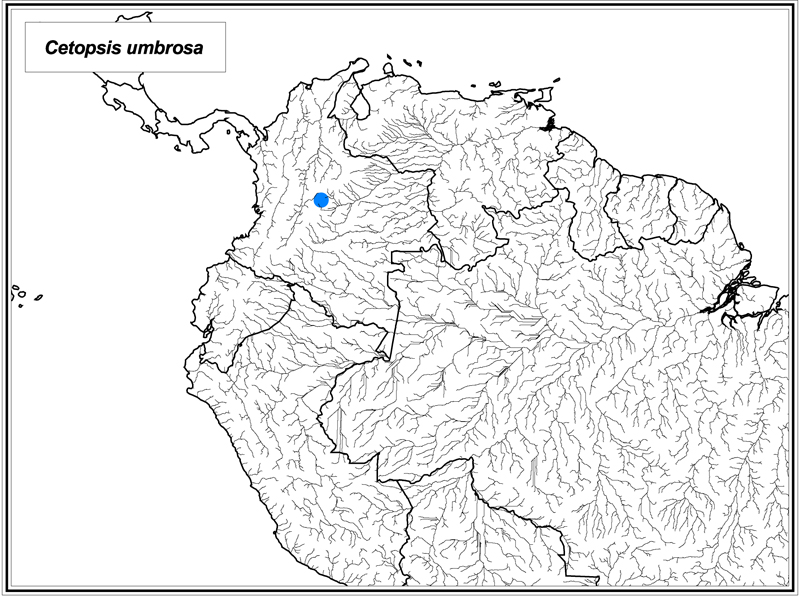
Reproduced from Vari, Ferraris and de Pinna (2005).
Cetopsis umbrosa Vari, Ferraris & de Pinna, 2005
Identification: Cetopsis umbrosa can be distinguished from all of its congeners by the combination of the presence of an eye, the conical teeth on the vomer and dentary, the rounded posterior nares which is distinctly separated from the contralateral nares by a distance greater than the width of the posterior nares, the absence of a dark humeral spot, the presence of a posteriorly-rounded, variably-developed, bilobed patch of dark pigmentation at the base of the caudal fin, the absence of a spot of dark pigmentation on the base of the dorsal fin and the absence of prominent dark pigmentation along the membrane behind the first ray of the dorsal fin, the presence of approximately eye-size dark spots on the lateral surface of the body, the presence of fine, scattered, dark pigmentation across the lateral and anterior surfaces of snout and the lateral surface of the body. It is further distinguished from the externally somewhat similar C. starnesi in the number of precaudal vertebrae (14 versus 11 or 12, respectively), caudal vertebrae (30 versus 33, respectively), and total anal-fin rays (26 versus 27 or 28, respectively). Maximum size: 54 mm SL.
Range: Cetopsis umbrosa is known only from a single locality in the western portions of the R�o Orinoco basin.
Information from Vari, R. P., C. J. Ferraris Jr. & M. C. C. de Pinna. 2005. The Neotropical whale catfishes (Siluriformes: Cetopsidae: Cetopsinae), a revisionary study. Neotropical Ichthyology 3:127-238.
